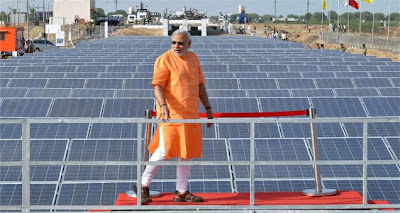It should be first noted there is a technical definition of an icecap and the colloquial one; a true icecap is a mass of ice less than 50 thousand square kilometers, while the polar icecaps are much larger than this. However, one will assume the question refers to the total ice mass on the surface of Earth, as melting of the polar caps would necessitate melting of all others.
To begin with, there are currently 30 million cubic kilometers of ice mass on Earth; from using density values, this is equivalent to 27 million cubic kilometers of liquid water.
Earth currently has 361 million square kilometers of surface area in
oceans, and 149 million square kilometers in 'land' area, for a total of
510 square kilometers. The source is not clear whether this is the
equivalent flat area (i.e. if Earth were a perfect spheroid) or if this
is the true area, including raised and uneven terrain.
So, if we only consider the ocean and consider the rise this would
present, we are working out the depth 27 million km3 would make over 361
million km2.
From these numbers, simple division tells us the sea level would rise by 27/361 = 74.8 meters beyond its current value.
No
information could be obtained regarding the elevation of the Empire
State Building; however, assuming it stands at 50 meters above sea level
and a 4 meter average storey height, we end up with the sixth floor
being new sea level.
The main ice covered landmass is Antarctica at the South Pole, with about 90 percent of the world's ice (and 70 percent of its fresh water). Antarctica is covered with ice an average of 2,133 meters (7,000 feet) thick. If all of the Antarctic ice melted, sea levels around the world would rise about 61 meters (200 feet). But the average temperature in Antarctica is -37°C, so the ice there is in no danger of melting. In fact in most parts of the continent it never gets above freezing.
At the other end of the world, the North Pole, the ice is not nearly as thick as at the South Pole. The ice floats on the Arctic Ocean. If it melted sea levels would not be affected.
There is a significant amount of ice covering Greenland, which would add another 7 meters (20 feet) to the oceans if it melted. Because Greenland is closer to the equator than Antarctica, the temperatures there are higher, so the ice is more likely to melt.
NASA finds that thickest parts of Ice Caps are melting faster. This ice is generally called as old ice which is actually formed by ice that has survived at least two summers.
Read Here :
http://www.nasa.gov/topics/earth/features/thick-melt.html
Melting Ice caps not just affect humans but the entire earth in general. Penguins, polar bears, whales, seals and dozens of other animals who are inhabitants of these polar regions. Imagine. these animals migrating to human colonies to find food and causing chaos. Our greed not just affects us but the entire planet in general.
There is a complete life chain that runs on polar regions. Polar bears, polar foxes, penguins, whales, seals and other creatures. If we disturb them they will disturb us.
Help Save The Earth, There Is No Life Elsewhere
Source:
http://wiki.answers.com
http://science.howstuffworks.com
http://www.nasa.gov











